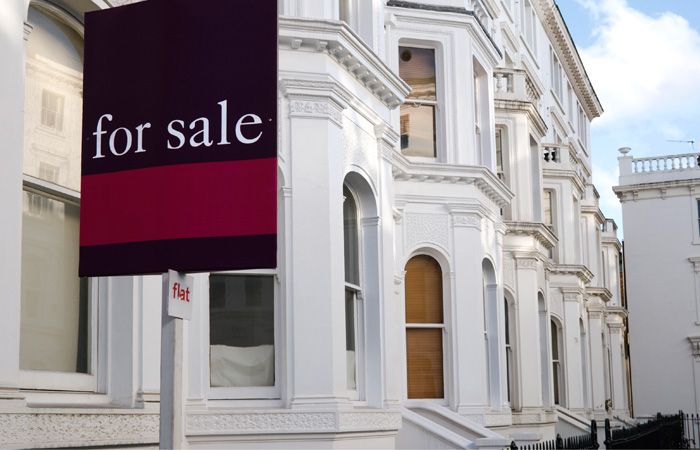
House prices dipped by 0.5% in June as the most generous phase of the stamp duty holiday neared its end, figures from Halifax reveal.
The latest index shows the first month-on-month decline in prices since January, while annual growth shrank from 9.6% in May to 8.8% last month.
Average prices across the UK slipped to £260,358, down from £261,743 in May.
While the East and West Midlands and Greater London saw slightly slower annual price gains compared to May, all the other regions and nations saw higher growth.
Wales continues to show the strongest inflation at 12%, followed by Northern Ireland at the North West at 11.5%, Yorkshire and Humberside at 10.9% and Scotland at 10.4%
For Northern Ireland and Scotland, the annual price rises were the highest recorded since 2007, while for Wales, the North West and Yorkshire, inflation was the strongest since 2005.
At the other end of the scale, Greater London again recorded the weakest annual growth at just 2.9%, while the East and South East recorded inflation of around 7%.
Halifax managing director Russell Galley says it is important to put the overall UK decline in context, with average prices still more than £21,000 higher than this time last year, following a broadly unprecedented period of gains.
He says: “With the stamp duty holiday now being phased out, it was predicted the market might start to lose some steam entering the latter half of the year, and it’s unlikely that those with mortgages approved in the early months of summer expected to benefit from the maximum tax break, given the time needed to complete transactions.
“That said, with the tapered approach, those purchasing at the current average price of £260,358 would still only pay about £500 in stamp duty at today’s rates, increasing to around £3,000 when things return to normal from the start of October.
“Government support measures over the last year have helped to boost demand, particularly amongst buyers searching for larger family homes at the upper end of the market.
“Indeed, the average price of a detached home has risen faster than any other property type over the past 12 months, up by more than 10% or almost £47,000 in cash terms.
“At a cost of over half a million pounds, they are now £200,000 more expensive than the typical semi-detached house.
“That power of homemovers to drive the market, as people look to find properties with more space, spurred on by increased time spent at home during the pandemic, won’t fade entirely as the economy recovers.
“Coupled with buyers chasing the relatively small number of available properties, and continued low borrowing rates, it’s a trend which can sustain high average prices for some time to come.
“However, we would still expect annual growth to have slowed somewhat more by the end of the year, with unemployment expected to edge higher as job support measures unwind, and the peak of buyer demand now likely to have passed.”
Yopa chief analyst Mike Scott says: “The Halifax report for June differs from Nationwide in showing a slowdown in the housing market for the month. “They expect prices to rise more slowly in the second half of the year as unemployment rates rise and we pass the peak of buyer demand.
“But Yopa disagrees with this analysis — we think that the anticipated modest rise in unemployment as the furlough scheme finally ends will have little effect on the housing market, and we expect another surge in buyer demand in the autumn as people look to finally put the pandemic behind them and get on with their lives, perhaps making a fresh start of some kind which may well mean a change of home for many.
“We therefore expect strong price growth to continue for the rest of this year and into early 2022.”
Meanwhile, Knight Frank head of UK residential research Tom Bill believes growth will slow, but not reverse in the second half of the year.
He says: “We expect house price growth to narrow to mid-single digits as tax breaks wind down and supply picks up.
“Comparisons with the global financial crisis are misleading given how low interest rates remain and the fact the mortgage market acts as more of a brake and less of a lubricant for housing market activity than it did in 2007.
“House prices were driven higher by a supply squeeze as the UK came out of the pandemic, an effect seen in other sectors of the economy.
“If you add in a stamp duty holiday and the fact pent-up demand had been building for five years against the uncertain backdrop of Brexit, the result was a burst of house price inflation.
“In what may be a sign of things to come in the UK, housing market activity is now beginning to moderate in North American markets as the distortive effects of the pandemic recede.”
Coreco managing director Andrew Montlake says: “Prices have fallen, and about time, too.
“The market has once again been getting ahead of itself in recent months and we should welcome this cool down, not run scared.
“It’s in everyone’s interest for price growth to moderate, otherwise the whole market ceases to function because affordability goes out of the window.
“Prices are likely to continue to cool during the second half of the year, but if the end of the furlough scheme does create a sharp rise in unemployment, the cool-down could become a correction.”



